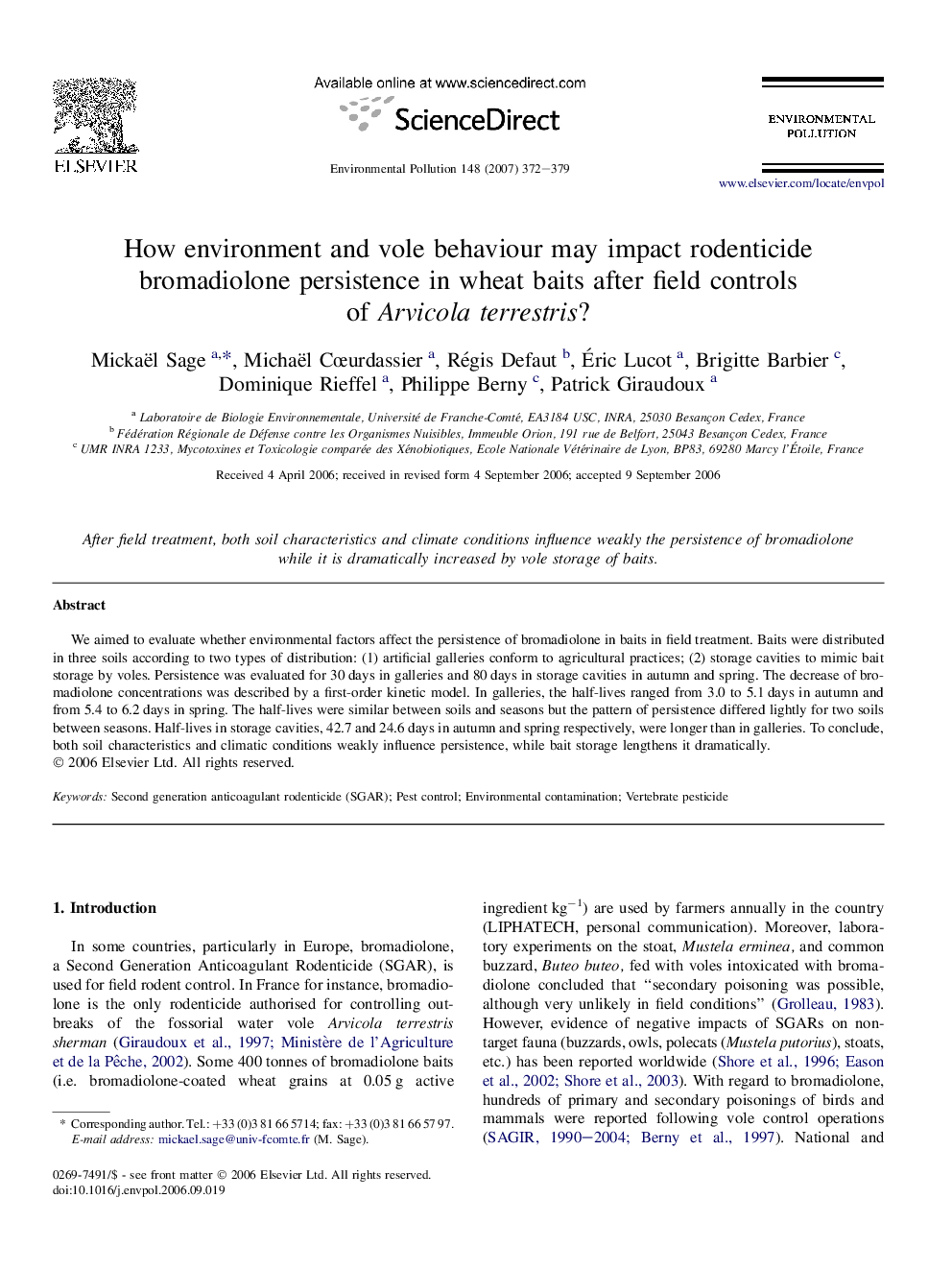| Article ID | Journal | Published Year | Pages | File Type |
|---|---|---|---|---|
| 4427595 | Environmental Pollution | 2007 | 8 Pages |
We aimed to evaluate whether environmental factors affect the persistence of bromadiolone in baits in field treatment. Baits were distributed in three soils according to two types of distribution: (1) artificial galleries conform to agricultural practices; (2) storage cavities to mimic bait storage by voles. Persistence was evaluated for 30 days in galleries and 80 days in storage cavities in autumn and spring. The decrease of bromadiolone concentrations was described by a first-order kinetic model. In galleries, the half-lives ranged from 3.0 to 5.1 days in autumn and from 5.4 to 6.2 days in spring. The half-lives were similar between soils and seasons but the pattern of persistence differed lightly for two soils between seasons. Half-lives in storage cavities, 42.7 and 24.6 days in autumn and spring respectively, were longer than in galleries. To conclude, both soil characteristics and climatic conditions weakly influence persistence, while bait storage lengthens it dramatically.
